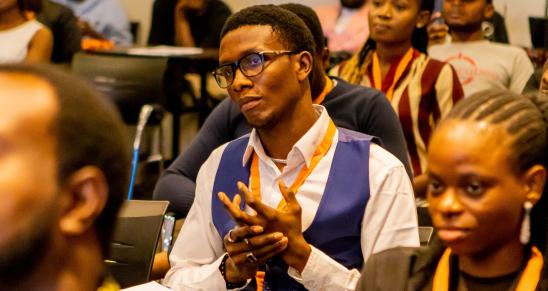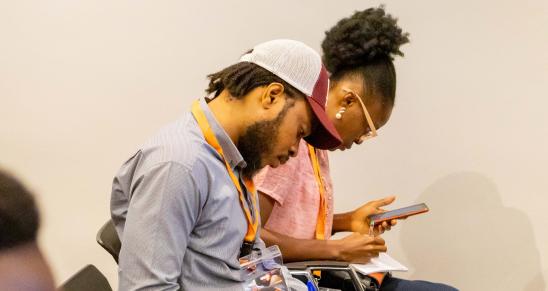Diversity in Voiceover Industry

The voiceover industry is a vital part of the entertainment and media world, providing the voices behind commercials, animated films, audiobooks, and more. However, like many industries, it has faced criticism for a lack of diversity and representation. In this article, we will explore the importance of diversity in the voiceover industry and the steps being taken to promote inclusivity.
Why Diversity Matters in the Voiceover Industry
Representation Matters
Representation matters in all forms of media, and the voiceover industry is no exception. When people from diverse backgrounds are not represented in the voices we hear, it can perpetuate harmful stereotypes and limit opportunities for underrepresented groups. By promoting diversity in the voiceover industry, we can ensure that all voices are heard and represented in the media we consume.
Authenticity and Connection
Voiceover work requires actors to convey emotion and connect with the audience through their voice alone. Having a diverse range of voices allows for more authentic and relatable performances, as different voices can bring unique perspectives and experiences to their work. This can also help create a stronger connection with the audience, as they can see themselves represented in the voices they hear.
Economic Opportunities
Promoting diversity in the voiceover industry also creates economic opportunities for underrepresented groups. By breaking down barriers and providing equal opportunities, more diverse voices can enter the industry and contribute to its growth. This not only benefits the individuals involved but also the industry as a whole, as it can lead to more diverse and innovative content.
Challenges in Achieving Diversity in the Voiceover Industry
Lack of Representation in Casting
One of the main challenges in achieving diversity in the voiceover industry is the lack of representation in casting. Many casting directors and producers tend to default to hiring the same types of voices, often overlooking diverse talent. This can be due to unconscious bias or simply not being aware of the diverse talent available. As a result, many talented voiceover artists from underrepresented groups struggle to find work in the industry.
Limited Opportunities for Training and Networking
by Andrew H (https://unsplash.com/@_exploratour) Another challenge is the limited opportunities for training and networking for diverse voiceover artists. Many training programs and workshops can be costly, making it difficult for those from lower-income backgrounds to access them. Additionally, networking events and conferences can be exclusive and not always welcoming to diverse voices. This lack of access to training and networking opportunities can make it challenging for diverse voiceover artists to break into the industry.
Stereotyping and Typecasting
Stereotyping and typecasting are also significant challenges in achieving diversity in the voiceover industry. Many voiceover roles are often based on stereotypes, such as the sassy black woman or the nerdy Asian character. This not only limits the range of roles available for diverse voiceover artists but also perpetuates harmful stereotypes in the media. Additionally, diverse voiceover artists may be typecast into specific roles, limiting their opportunities for growth and variety in their work.
Steps Being Taken to Promote Diversity in the Voiceover Industry
Increased Representation in Casting
One of the most significant steps being taken to promote diversity in the voiceover industry is increased representation in casting. Many casting directors and producers are now actively seeking out diverse voices for their projects, and some are even holding open casting calls specifically for underrepresented groups. This not only provides more opportunities for diverse voiceover artists but also helps to break down stereotypes and promote inclusivity in the industry.
Diversity and Inclusion Training
To address the issue of unconscious bias and promote inclusivity, many companies and organizations in the voiceover industry are now offering diversity and inclusion training. This training helps to educate individuals on the importance of diversity and how to recognize and overcome their own biases. By providing this training, the industry is taking a proactive approach to promoting diversity and creating a more inclusive environment for all.
Mentorship Programs
Mentorship programs are also being implemented to help promote diversity in the voiceover industry. These programs pair experienced voiceover artists with up-and-coming talent from underrepresented groups, providing them with guidance, support, and networking opportunities. This not only helps to break down barriers for diverse voiceover artists but also allows for the passing down of knowledge and skills from experienced professionals.
Increased Access to Training and Networking Opportunities
To address the issue of limited access to training and networking opportunities, many organizations are now offering scholarships and grants for diverse voiceover artists. This helps to make training programs and workshops more accessible and provides opportunities for networking and career development. Additionally, some organizations are now offering online training and networking events, making it easier for diverse voiceover artists to participate.
Real-World Examples of Diversity in the Voiceover Industry
Pixar's animated film "Soul" is a prime example of diversity in the voiceover industry. The film features a predominantly Black cast, including Jamie Foxx, Tina Fey, and Angela Bassett. The casting of diverse voices not only adds authenticity to the film but also promotes representation and inclusivity in the industry.
"The Simpsons" Recasting
In 2020, "The Simpsons" announced that they would no longer have white actors voice non-white characters. This decision came after years of criticism for the show's lack of diversity and the use of white actors to voice characters of color. The show has since recast several characters, including Apu, with actors of the appropriate race.
Who Is Responsible for Promoting Diversity in the Voiceover Industry?
Promoting diversity in the voiceover industry is a collective responsibility. Casting directors, producers, and companies all play a role in promoting diversity and inclusivity in the industry. Additionally, voiceover artists themselves can also take steps to promote diversity by speaking out against harmful stereotypes and advocating for more diverse casting.
Conclusion
Diversity in the voiceover industry is crucial for representation, authenticity, and economic opportunities. While there are challenges to achieving diversity, steps are being taken to promote inclusivity and provide more opportunities for underrepresented groups. By working together, we can create a more diverse and inclusive voiceover industry for all.
More Posts

4 Ways to Learn Accent as A Voiceover Artist
As a voiceover artist, mastering accents can significantly broaden your range and open up more opportunities for diverse roles. Here are four quick tips tailored specifically for voiceover artists looking to learn accents:

How To Stand Out In Your Career
Standing out in your career requires a combination of skills, attitudes, and strategic actions. Here are some tips to help you stand out and advance in your career:

How you can become a better voiceover artist
Are you interested in becoming a voiceover artist? Do you have a passion for voice acting and want to improve your skills?
